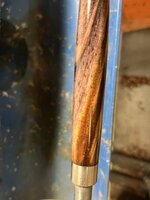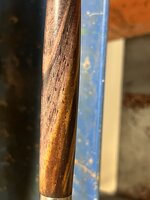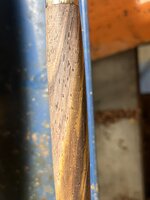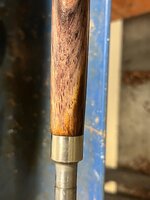I am confused and need help. I have turned about 30 pens. My first few were horrible. I watched lots of videos and read lots of articles. The next several were better, but still needed help. I went into my local Woodcraft store and received good turning tips from them. I haven't taken any classes.
Here are the last few pens I have turned. My big question is the little scratches, is that a scratch or the wood grain. It feels completely smooth and was completely smooth when I was done turning.
Please don't hold back on any criticism. This is Cocobolo wood. This is going to be for a PSI executive pen.
Here are the last few pens I have turned. My big question is the little scratches, is that a scratch or the wood grain. It feels completely smooth and was completely smooth when I was done turning.
Please don't hold back on any criticism. This is Cocobolo wood. This is going to be for a PSI executive pen.





